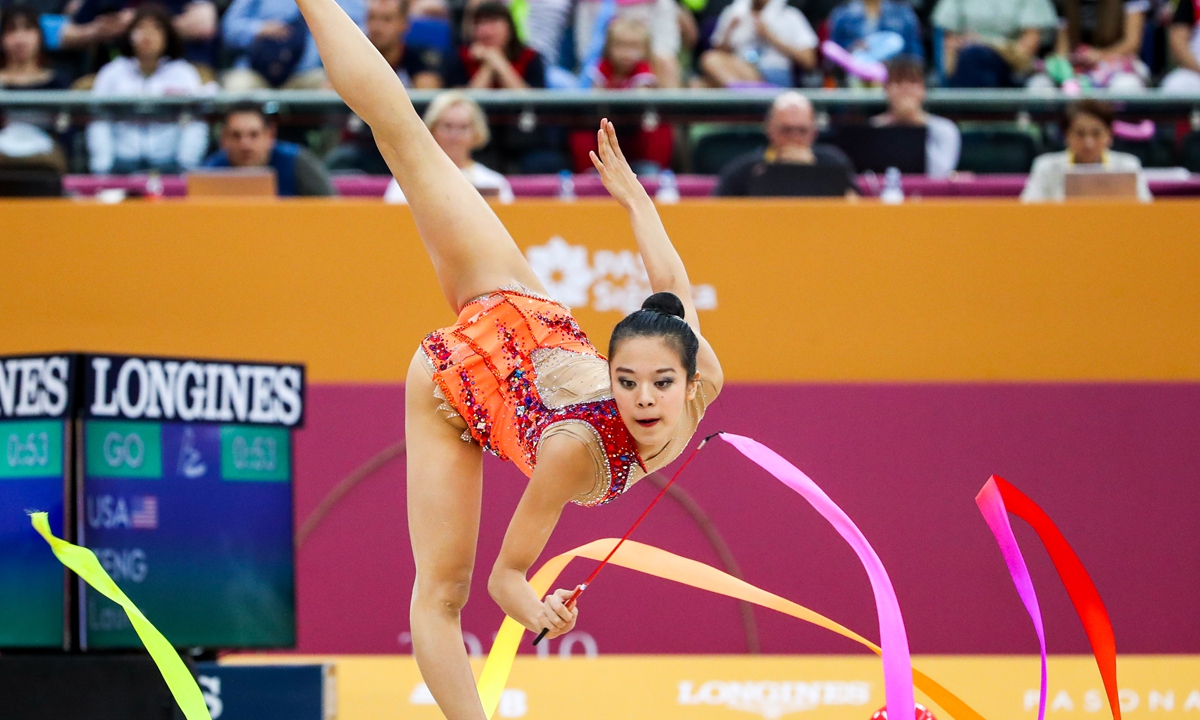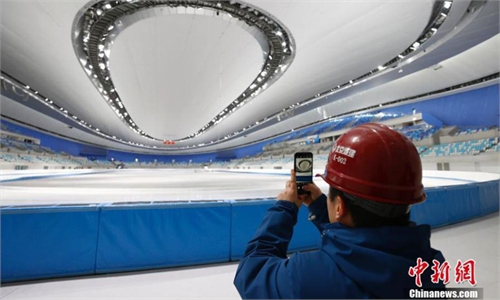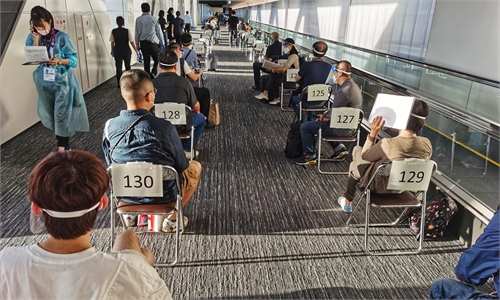
Laura Zeng of the US performs her ribbon routine at the individual all-around final at the Rhythmic Gymnastics World Championships on September 20, 2019. Photo: IC
Since she started training as a rhythmic gymnast at the age of 7, America's Laura Zeng has come to realize that most people in her country do not know much about her sport.
The 21-year-old competed at the 2016 Rio Olympics, is a six-time national champion and is her country's best shot at a medal in rhythmic gymnastics at the Tokyo Olympics.
But there is little fanfare, or funding, for rhythmic gymnastics in the United States.
So Zeng and her teammates have turned to social media to rally fans, inform the public and keep up with what the competition is up to ahead of the Games.
"Social media has helped rhythmic gymnastics expand not just in the United States but globally as well," Zeng said.
"Why would you put your kid in something that won't pay dividends? If you do artistic gymnastics you know there's many different routes that you could go."
USA Gymnastics has ramped up its marketing and support of rhythmic gymnastics, even running a video series on Instagram to help explain the sport to a broader audience.
"The number of rhythmic members has fluctuated over the last several years, but from the 2014-15 season to the 2019-20 season, there was a total increase of more than 34 percent in rhythmic members," a spokesperson for the organization said.
However, artistic gymnast Nastia Liukin said rhythmic gymnastics had a perception problem.
"It's just not as popular as artistic," said the 2008 Beijing Olympics all-around champion.
"When you say the word 'gymnastics,' you think of flips."
USA Gymnastics' main Instagram page has more than 800,000 followers, over 100 times more than the official rhythmic gymnastics handle.
'Running around with a ribbon'
Faced with such apathy, Zeng's teammate Evita Griskenas has taken to Instagram, Facebook and TikTok to raise her profile, and posts blogs to educate people.
"The attitude from people in the United States has always been, 'rhythmic gymnastics? Is that the thing with the ribbons?'" she said.
"Letting people know that it's not just running around with a ribbon like a headless chicken would be kind of nice."
An Olympic medal event since 1984, rhythmic gymnastics is performed in individual and group competitions using hoops, balls, clubs and ribbons.
Gymnasts are judged on several factors, including how they use the apparatus - throws, tosses, spins and catches, for instance. They are also marked on "body difficulties" such as balances, turns, and jumps, as well as execution and artistry.
Eastern European countries have invested more heavily in rhythmic gymnastics than the United States and the sport has been popular in former Soviet states for decades.
Thanks to strong support and infrastructure, Eastern European rhythmic gymnasts have been more able to train and compete domestically during the COVID-19 pandemic, a definite advantage over their US counterparts.
"It's a huge thing, the inequality of the sport, if you compare its popularity here in the United States versus in Eastern European countries," Zeng said.
Zeng has cultivated an Instagram following of nearly 16,000 but that figure pales in comparison to the roughly 340,000 followers of Russian twins Dina and Arina Averina, who are expected to vie for gold and silver in Tokyo.
Israel's Linoy Ashram, another medal chance, has more than 60,000 followers.
Still, this is the first time the United States has been able to send a full delegation of rhythmic gymnasts to the Olympics since the Games included the group competition in 1996.
"With a chance to make the finals, we're really a sport to watch," Zeng said.


